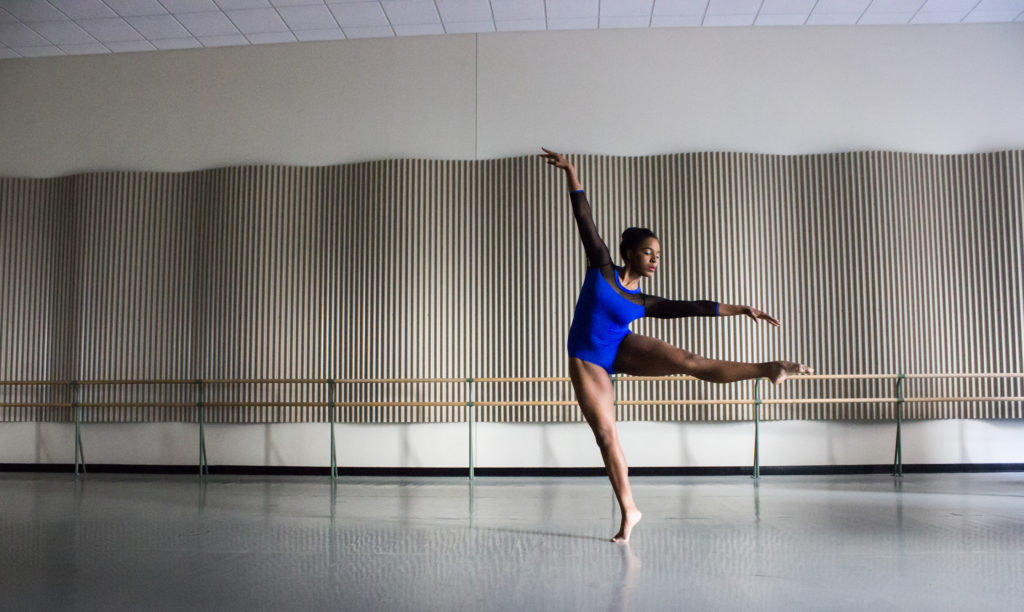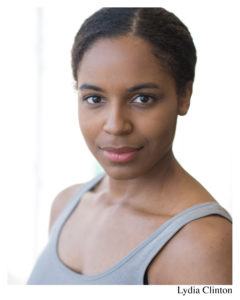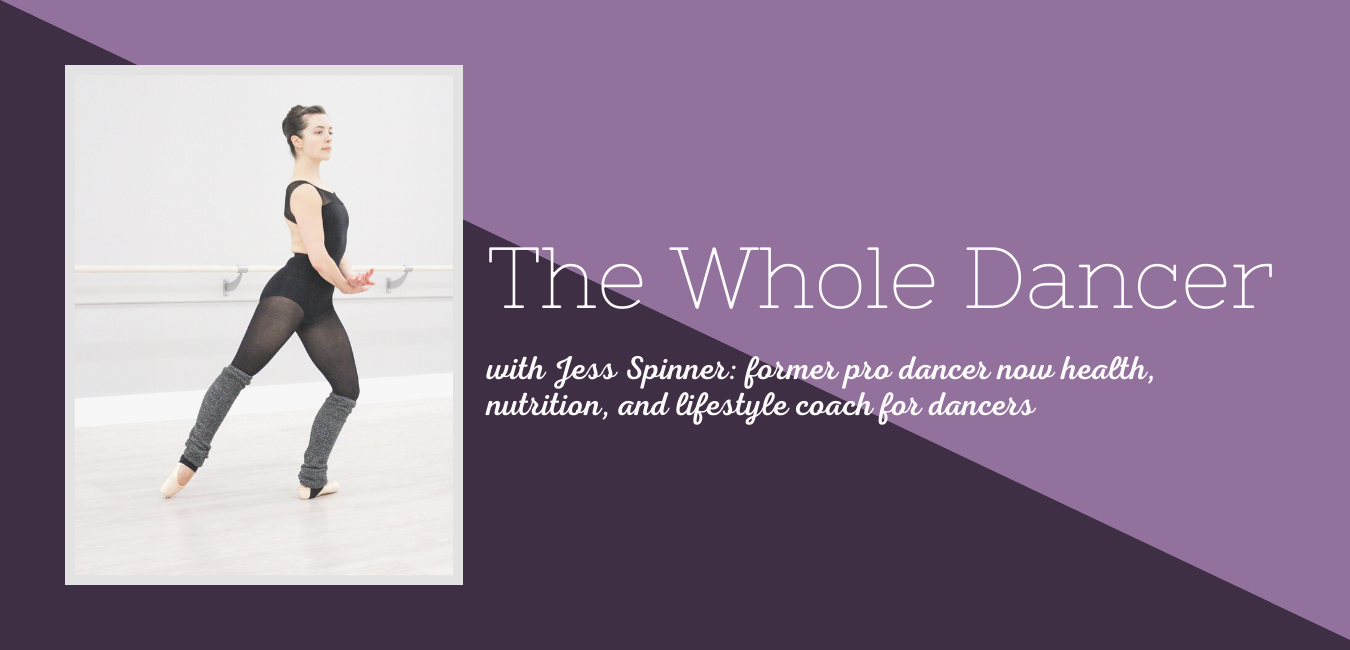One Whole Dancer on The Whole30
Guest post by Lydia Clinton

Jess posted a video about the Whole30 back in October which coincidentally was when I was right in the middle of trying it! I’d heard of Whole30 when my sister did it twice (once while doing mission work in a foreign country!).
Then, I heard from other friends about their challenges and experiences. So, I decided to try it not necessarily for the health benefits but just for the challenge. At that point, my eating was not the best, and I needed to have some parameters to get back on track.
I lazily prepared by reading what I couldn’t consume and thought I could learn as I went along. All I had to do was just take out the foods they said to not eat, right? Well, I did that for the first week and STARVED.
I eliminated the foods but didn’t replace them with more vegetables, meat, fruit, etc. One day, I was fed up with being hungry all of the time and ate so much Whole30 food until I was stuffed. That’s when I learned that I needed to eat more (I would not recommend binge eating on any kind of diet. But, I’ll explain that later).
The second and third week improved a little bit, but I still was figuring out how much I needed to eat and when I should eat. However, the fourth week was probably the most amazing my body felt in my life.
There was one particular day when I did a full work out, took a dance class, and worked for several hours without feeling drained or cranky. I haven’t felt the same way since that last week.
When I have tried to implement new habits, the new habits do not last longer than a few weeks, and I am back to where I started not seeing or feeling any changes. But, I learned that when I stuck with the diet for a month, I experienced all of these changes internally and externally.
That was significant lesson I learned: I needed to follow through long enough to see results.
Improved energy was one of the many positive outcomes of eating so cleanly for a month. I could (and still can) easily feel how food contributed to my thinking and mood. When I ate well, I did not feel groggy or sleepy, felt lighter in my body, and could think more clearly. Some of the other physical benefits were clearer skin, no bloating, and a slightly leaner body even before I started exercising about halfway through the month.

Not only did I experience physical changes, but my lifestyle changed as well. When I did The Dancer’s Best Body Program, I finally started cooked more instead of depending on what my family made. Sometimes, they cooked what I could eat, but that was not always enough.
As a result, I experimented with vegetables, fish, herbs, spices, and Whole30-approved oils to create some pretty flavorful meals. Even other dancers were curious about what I would bring to eat for rehearsal and consequentially wondered about Whole30 in general.
When I did not eat at home, I had to plan how I would react to unpredictable or emotional situations. The rigidness of the program was a good foundation for me to feel strong enough to refuse foods I was not eating during Whole30.
Before Whole30, I felt as if I had no control to thoughtfully say no to food that was just there regardless of how I felt. But, if I messed up during the thirty days, I would have to start over which was good incentive to stick with it. Food was (and still is) a way that I handled many emotions; yet, I could not consume ice cream, chips, and bread. On one hand, I abstained from eating “unhealthy” foods when I wanted to emotionally eat. Instead, I did binge on the less healthy foods such as Larabars, RX Bars, meat, and almond butter.
Because I was gaining momentum in making significant changes in my eating, I felt like I had power to make other lasting changes in my life. I took a break from the gym to have enough energy to perform in my last couple of shows for the year.
My sleeping improved to the point that I did not have to take melatonin which contained ingredients that were against Whole30. I got good quality sleep which caused me to stick with a bedtime routine and go to bed on time. In addition to sleep, my water intake improved significantly. My options of snacks were limited, so that caused me to drink more water and tea. Tea is an excellent alternative instead of snacking when I am already full.
The last and unexpected benefit was how others became involved in my journey. As I mentioned before, my family cooked food that I could eat but even made an effort to prepare Whole30-approved dishes long after I completed the program. Plus, I could share with them my victories and struggles and in turn received their encouragement.
After seeing my sister and me complete Whole30, my mom has expressed that my brother and she will do it after the holidays (we are trying to get my dad on board). Not only was my family intrigued, but other dancers were as well. In fact, as I am writing this article, one of them has successfully completed her first Whole30 and another is strongly considering it.
I was super proud that I finished the diet as a lot of people feel successful when they finish Whole30. We love to share about those 30 days of fight and triumph. What most DON’T talk about is coming off of it.
As I was wrapping up, I was curious about how to move forward. The Whole30 has a 10-day (or longer) reintroduction plan that brings back a food group into one’s diet to see how they will react to each one. I was going to finish around the beginning of the holiday season which I thought would be ok. I felt so good during the Whole30- why would I be in a hurry to incorporate those poisonous foods into my daily diet?

As soon as I hit day 31, I slowly started to eat more and more foods that I had not consumed for over a month regardless of what food group they belonged to. Also, I performed my last show for the year, so that day was extra celebratory.
When the cast and I went out to a bar, I planned to just drink sparkling water. But, then two people at different times offered to buy drinks for everyone, and I would not pass up free alcohol. I ended up drinking two shots of scotch which got me drunk enough to throw out any resolution to stick with any diet and to eat a cheeseburger and fries.
The next morning, I had THE worst hangover in my life. Then, after several days of aimless eating and feeling sick, I had to go back to eating Whole30 for several days to reset my stomach and actually follow the reintroduction plan into Thanksgiving.
My body could handle the grains, dairy, and sugar a little better by going slowly. Now, I can eat all of those foods again, but I function at my best when I eat mostly or only vegetables, protein from animal sources, fruit and nuts. I highly recommend that you follow the reintroduction plan because you will get sick like I did trying to eat everything at once.
While I experienced many benefits of doing Whole30, there were some negative consequences of following such a strict diet that I still experience now. First, I was obsessively thinking about eating and body composition. I thought too often about what I could and could not eat, my weight, and my body image.
It took me some serious intention and awareness to carefully choose what I could and could not eat; yet, this led to thinking about food whenever I was not engaged in something else. I also periodically dreamed about eating the off-limit foods.
I also thought a lot about my weight and body which I still do. It was great to see physical changes so quickly, but this made me want even more quick improvements. One rule of Whole30 is to not weigh or measure yourself at all while you are following the diet.
Unfortunately, my scale was in a very visible spot which made me want to weigh myself. Initially, I saw that I dropped 5 pounds which was awesome! But, then I continued to measure my weight multiple times and eventually hit a plateau. I also would touch where I could newly feel bones and muscles especially around my midsection. Sometimes, I will habitually touch that area.
The other problem was that I still fell into binge eating. I will not go too much into detail, but I have struggled with (and still do) with controlling how much and when I eat. Plus, I emotionally eat when I feel almost any strong emotion.

When I was on Whole30, I still found ways to still keep this habit. While I could not eat whatever I wanted, I ate what I still found pleasurable but probably not the healthiest especially if consumed in excessive amounts. Interestingly, whenever I had binging episodes, I would feel stuffed, but the feeling would pass more quickly did not leave me feeling sick (yet, I was still abusing food).
Shortly after the Whole30 and reintroduction, I had to take a break from exercise and reading so many articles that had to do with food and fitness to heal my mind and heart. I still focused on eating healthily but was not overly concerned when I ate grains, dairy, or foods high in sugar.
Now, I am concentrating on not only what I eat, but how I relate to food. I am working on letting my body tell me when to eat and when to stop which Jess has mentioned. I am also keeping a closer eye on my emotions and how I handle them. I find I am more sensitive to when I eat poorly, and the consequences seem more severe. This has been encouragement for me to make better choices because I am eager for my body to feel its best.
I watched Jess’s video after I was done to compare my experience and then emailed her with my thoughts which hopefully provide some advice to you who are considering Whole30. We both agreed that if you are vegetarian or vegan, Whole30 will be pretty difficult because your major source of protein is now meat, fish, and eggs. However, I would not completely rule it out.
You could try doing a less intense version by still eliminating alcohol, added sugar, and additives like sulfites. Or, take out one food group like grains or dairy to see how your body feels. In the book, the author, Melissa Hartwig, addresses this concern and suggests some ideas such as doing a different version even if you will not experience the same benefits. I recommend reading the book or going onto the website for further information.
It’s definitely better to focus on lifestyle change vs. a short term diet. Prior to Whole30, I had never followed any strict diets but rather tried to stick with guidelines. But for me, the Whole30 was a great launching pad to figure out what foods were good for me long term and to have more self-control over what I choose to eat.
It is challenging to figure out how to come out of eating a such limited regimen. What I found to work is the “good enough” approach where I am eating mostly like Whole30 foods but also incorporate a little bit of grains and dairy. I also don’t feel guilty when I indulge. If you look on the Whole30 website, there is is an Off Road Map that helps you make decisions on indulging.
So, should you try doing Whole30? I say why not! As Jess talks about in The Dancer’s Best Body Program and I have experienced over the past several months, finding what will you reach your potential physically is a process and a journey.
I encourage you to try any new ways of nourishing your body as long as you are smart about it and listen to your body. It can be tempting to fret over food like sorting groups into either being good or bad. But, as Jess also said and as I am learning, certain foods are neither good nor bad.
I am still discovering what habits I need to create and delve into the deeper issues of the mind and heart. I do not think I will ever arrive to the perfect body or maintain the perfect regimen, but I can get closer to loving myself more and making my body more resilient and healthier.
 Guest Post by Dancer Lydia Clinton:
Guest Post by Dancer Lydia Clinton:
Photos of Lydia from top by:
